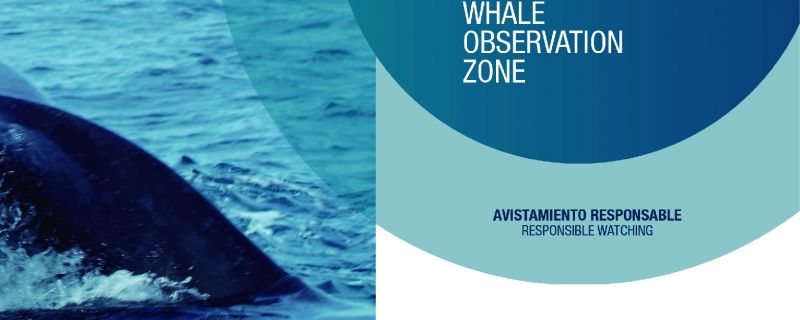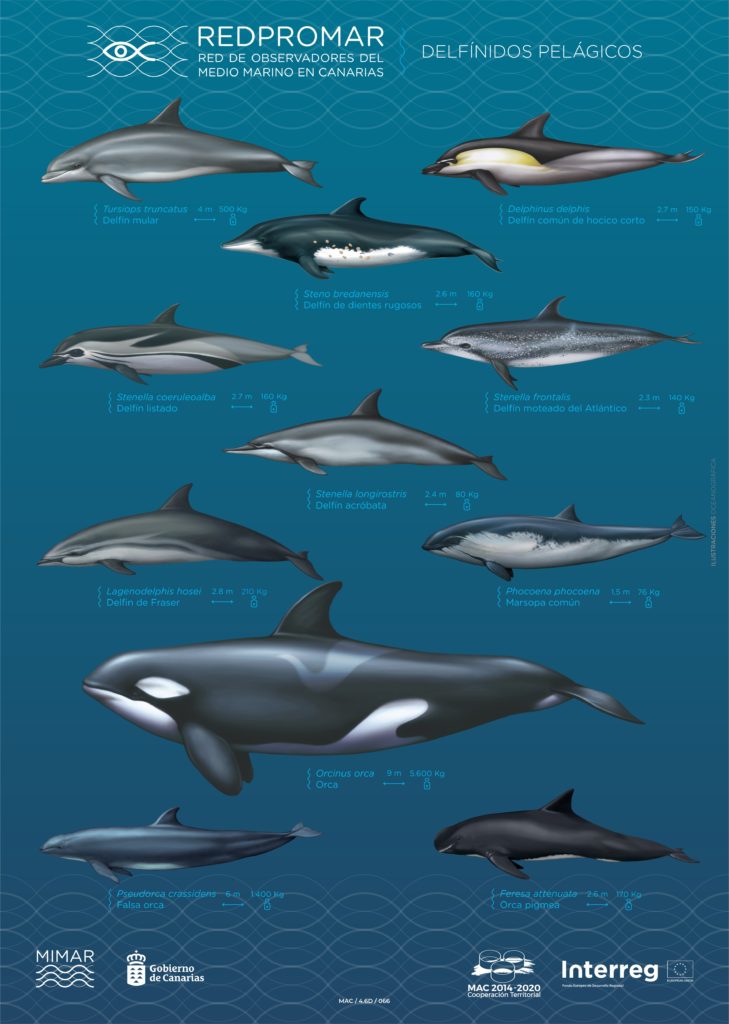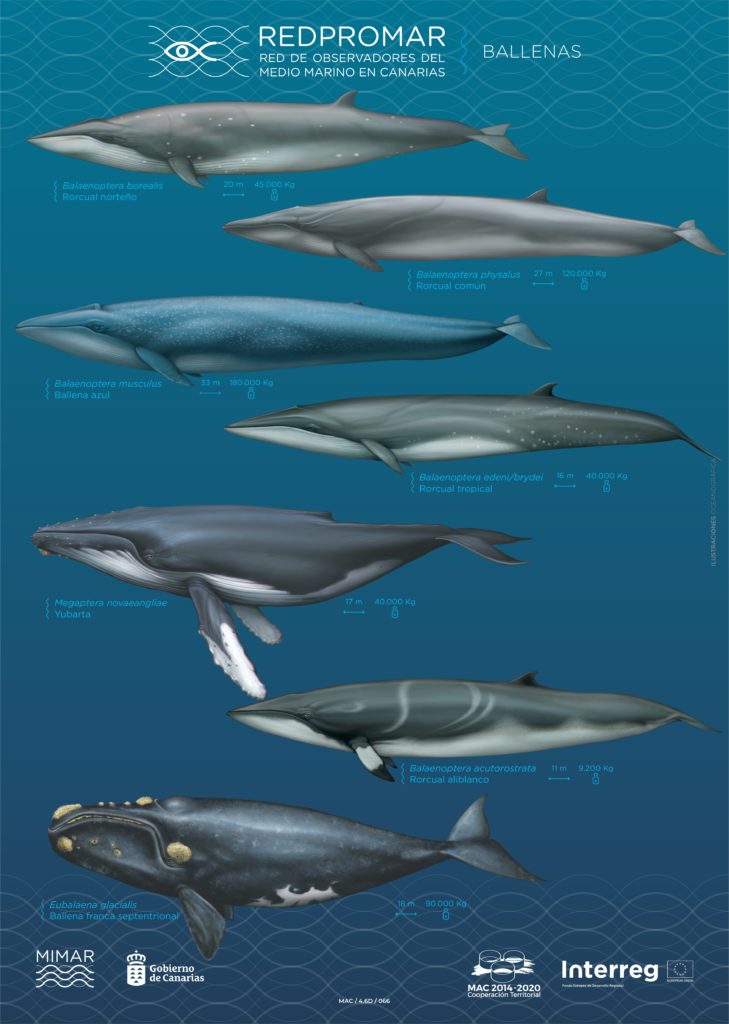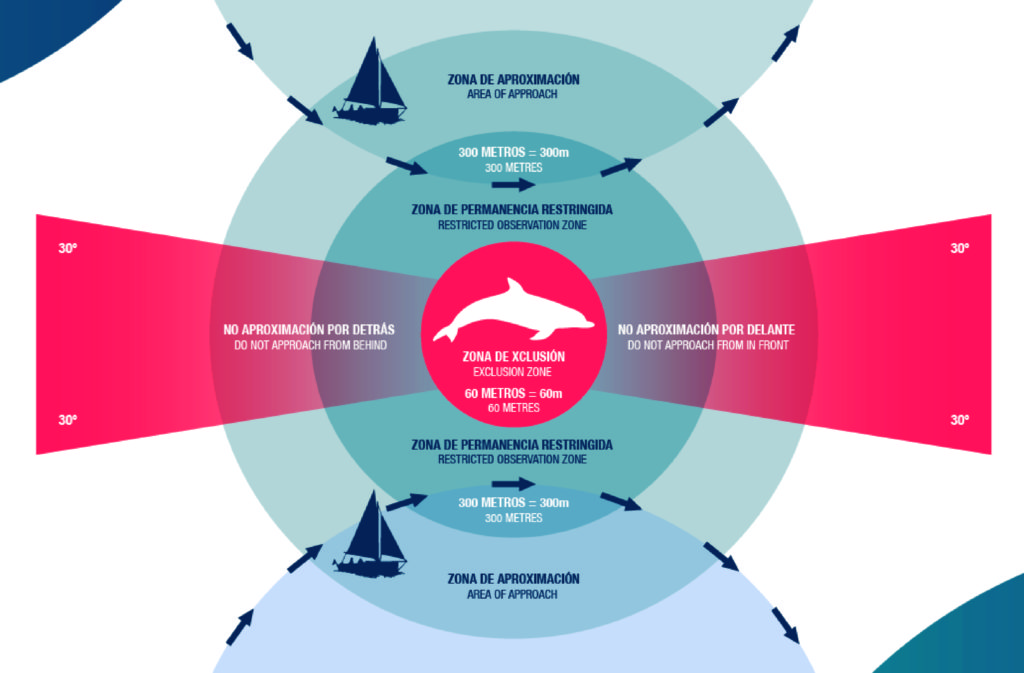
In the Canary Islands we are lucky enough to be able to see a great many types of cetacean up close and in their natural environment. The most common species have been described by RedPROMAR in some wonderful infographics that you can download here.


We must remember that these are vulnerable creatures and so in order to maintain the privilege of continuing to see them at sea, and avoid seriously impacting their habitat and coexistence, we should comply with a simple but effective code of conduct,
In the document that you can download here, Puerto Calero, as a Blue Flag marina, responsibly informs visitors and other marine wildlife enthusiasts how best to practice safe cetacean watching.
Boats practicing responsible whale-watching should adhere to the following criteria:
• Boats should approach the animals carefully and steadily, at a speed of less than 4 knots. The animals
should never be approached from a 90º angle, or from in front or behind, but at an angle of at least 30º.
• During the observation, boat should sail a parallel course, avoiding sudden changes in speed or direction.
• A 60m exclusion zone must be observed, avoiding any contact. Swimming or diving with cetaceans is
therefore forbidden.
• The maximum duration for a stay between 60m – 300m distance, is 20 minutes.
• Between switching engines off and on, remain in neutral or out of gear for at least one minute. All changes
in speed or revolutions should occur gradually and slowly.
After observation, and upon leaving the area, boat speed should be maintained until
outside the cetacean observation zone.
• If more than one boat approaches the same cetacean or group of cetaceans simultaneously, they should
coordinate their approach and manoeuvres via radio, to ensure a minimum impact on the animals.
• Boats should never reverse, except in an emergency or to avoid colliding with another boat or a cetacean.
• Sailing in a circle around a cetacean or group of cetaceans, together with any actions that limit their
freedom of movement, is forbidden.
• If behavioural changes or warning signs are observed in a cetacean or group of cetaceans, such as
repetitive jumps or changes of direction, the cetacean observation area should be abandoned.
• Producing noise or high-pitched sounds that may disturb the animals is also forbidden unless this is
necessary for public safety or the animals’ protection.
• If a non-recreational vessel is accosted in any way by cetaceans, the vessel should continue at the same
speed and heading, or, if possible, activity should be stopped. In all cases, the vessel should act in accordance
with reasonable criteria that support the animal’s protection and conservation.

